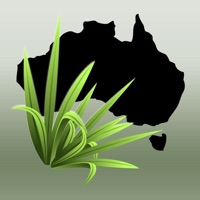
写的 - 写的 - LucidMobile
1. We are grateful to Anthony Orchard for lending his expertise on Cassinia to this project; Nunzio Knerr for helping with the generation of distribution maps; Miguel de Salas for helpful discussions on the distribution of several species in Tasmania; the herbaria AD, BRI, HO, NE, NSW, and PERTH for making available specimens for study; and Parks Australia for funding through the Bush Blitz Applied Taxonomy grant scheme.
2. The following characters may be particularly useful for quickly narrowing down the possibilities during identification: capitulescence size, capitulescence structure, leaf dimensions, leaf shape, indumentum (hairs) of young leaves and stems, flowering head dimensions, whether involucral bracts are straight or radiating, and, in particular for smaller flowering heads, the number of flowers per head.
3. (Note that leaf hairs refer to the surfaces, that is excepting hair types found only in the mid-rib groove on the upper side of young leaves.) Colour, texture or transparency of involucral bracts are somewhat more subjective and should be used with care, as their interpretation may differ a bit from person to person.
4. The key was produced by CSIRO scientist Alexander Schmidt-Lebuhn and Kirsten Cowley at the Australian National Herbarium (CANB) through funding from the Bush Blitz Applied Taxonomy grant scheme.
5. As currently circumscribed the group comprises the large genera Cassinia and Ozothamnus as well as the small satellite genera Apalochlamys, Calomeria, Haeckeria, Ixodia, Odixia and Paenula.
6. They represent approximately one fifth of the species of the Australian Gnaphalieae, also known as the cudweed or everlasting paper daisy tribe, and are generally woody plants with a centre of diversity in south-eastern Australia.
7. All morphological characters are illustrated, species are illustrated and have distribution maps, and the key provides species profiles and links to the Atlas of Living Australia.
8. Below the character list the user will find options for taxonomic or geographic subselection, allowing for example to restrict the key to Tasmanian Ozothamnus, if so desired.
9. An illustrated multi-access key to the species of the Cassinia group (Asteraceae: Gnaphalieae).
10. Also not covered at this moment are the three informal phrase name taxa Ozothamnus sp.
11. Most of these genera appear to be phylogenetically nested in Ozothamnus sect.
或按照以下指南在PC上使用 :
选择你的电脑版本:
软件安装要求:
可直接下载。下载如下:
现在,打开已安装的模拟器应用程序并查找其搜索栏。一旦找到它,请键入 Key to the Cassinia group 在搜索栏并按搜索。点击 Key to the Cassinia group应用程序图标。一个 窗口 Key to the Cassinia group 在Play商店或应用程序商店将打开并且它将在您的模拟器应用程序中显示商店。现在,按下安装按钮并像在iPhone或Android设备上一样,您的应用程序将开始下载。现在我们都完成了。
你会看到一个名为“所有应用程序”的图标。
点击它,它会带你到一个包含所有已安装应用程序的页面。
你应该看到 图标。点击它并开始使用该应用程序。
下载 Key to the Cassinia group 对于Mac OS (Apple)
| 下载 | 开发人员 | 评论 | 评分 |
|---|---|---|---|
| Free 对于Mac OS | LucidMobile | 0 | 1 |

Environmental Weeds Australia

Rice Doctor

Sweetpotato DiagNotes

Central American Malaria Vectors

Pacific Pests Pathogens Weeds
韩剧TV-极速版追剧大本营
网易有道词典-高效学习App
百度翻译-英语学习必备
翻译 - 立即翻译
浏览器-360度全新打造的平板浏览器

Google 翻译
追书大师
裁判文书网
一起考教师Pro-教师资格证考试宝典
金山词霸-英语学习高考词典翻译软件
中国法律汇编 - 法律法规文库/司法解释
DeepL翻译
北京e窗通
顶点小说-小说电子书阅读神器
腾讯翻译君-语音翻译和英语词典